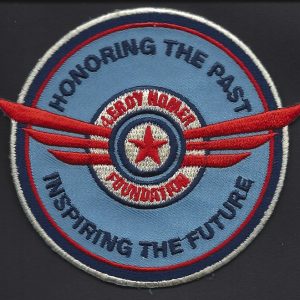100 Years of Naval Aviation
In 2011, the United States celebrates a proud history with the celebration of an important anniversary: the centennial of Naval Aviation. It was early in 1911 that the first Naval Officers began reporting for flight training, and the first of these pioneers became qualified as aviators.[1] The first training base became Naval Air Station Pensacola, which is still the starting point for every Naval Aviator today and is considered the “Cradle of Naval Aviation.” It was on November 14th, 1910 that Eugene Ely courageously launched in an airplane from the deck of the USS Birmingham, becoming the first person to ever fly from a ship. On the opposite coast just two months later, Ely accomplished the first carrier landing when he landed on the Pennsylvania in San Francisco Bay.[2]
From that first year to 2011, we have seen the incredible transformation of our Naval Air Forces into the most potent and capable fighting force in history. Shipboard aviation has played a vital role in nearly every conflict the United States has been involved in, from being the decisive element in the second World War in the Pacific to Global War on Terrorism missions today. United States Navy and Marine Corps aircraft are capable of accomplishing a wide variety of missions from the sea, whether that is from big-deck nuclear powered aircraft carriers, amphibious assault ships, or from the decks of destroyers or other smaller ships.
Over seventy percent of Earth is covered by water and two-thirds of the world’s population lies within easy reach of naval aircraft.[3] These planes and helicopters are autonomous- they require no basing rights or direct support from any foreign nation while operating at sea. Carrier battle groups are often within a few days, if not hours, of potential conflict zones. At the outbreak of any conflict or natural disaster, the first question our president often asks is “Where are the carriers?” In addition to supporting events on land, Naval Aviation also remains vital to keeping the seas open. With the vast majority of commercial transportation taking place on the world’s oceans, the protection of sea-lanes of transportation cannot be understated.
Technology will continue to advance as we strive to improve the platforms we already have, as well as develop new aircraft like the F-35 Joint Strike Fighter and the P-8 Poseidon and implement them into the fleet. We will continue to see more un-manned aerial vehicles; however, the bread and butter of our strike force will remain the manned strike aircraft launched from the carrier battle group, or from an amphibious strike group for Marine Corps assets. These aircraft consist of Navy F/A-18 Hornets and Super Hornets, as well as Marine Corps Hornets, AV-8B Harriers, and attack helicopters. In addition to carrier and land-based fighter/attack aircraft, there are many other Naval Aviation assets which cover a wide variety of missions, whether it be the incredibly versatile H-60 Seahawk helicopter providing disaster relief, a P-3 Orion observing and controlling the battle space, or a C-130 Hercules transporting supplies into a warzone.
US Naval Aviation has come a long way in the past one hundred years. Despite increased operational demands and fewer operating ships, our Navy and its aviation assets will continue to remain at the tip of the spear, ready to carry out our nation’s most important missions at a moment’s notice. The celebration of the Centennial will be held throughout 2011 at airshows and Naval Air Stations all around the United States.
LTJG Mike Scott, USN
For more information on events for the anniversary, visit: http://www.navalaviation100.org/
The US Navy’s official page for the Centennial:
or keep up with the events on the 100th Anniversary of Naval Aviation Facebook Page: http://www.facebook.com/navalaviation100
[1]“Part 1 A Few Pioneers 1899-1916” United States Naval Aviation 1910-1995, 6 July 1999, <http://www.history.navy.mil/download/history/part01.pdf> (04 March 2011).
[2]“Part 1 A Few Pioneers 1899-1916”
[3] Helprin, Mark, “The Decline of U.S. Naval Power” The Wallstreet Journal, 2 March 2011.





Until I read the “Parade” article of Sep. 11, 2011 I had never heard of the Leroy Homer Jr Foundation. It seems a fitting memorial for a pilot, and US
Air Force veteran. Especially since the crash of flight 93 saved the very face of this nation by thwarting the particular assignment of the terrorist
criminals who hijacked the aircraft .
Pingback: Naval Aviation Art | Airplane Prints